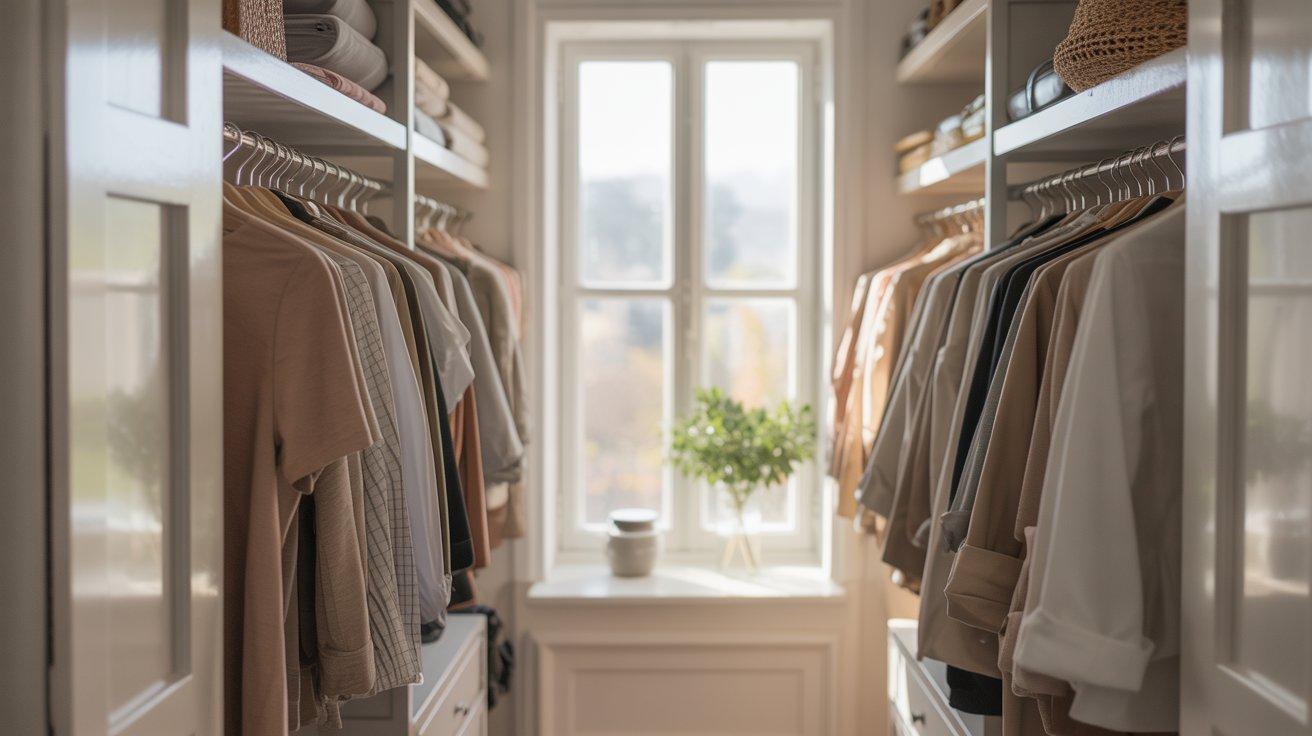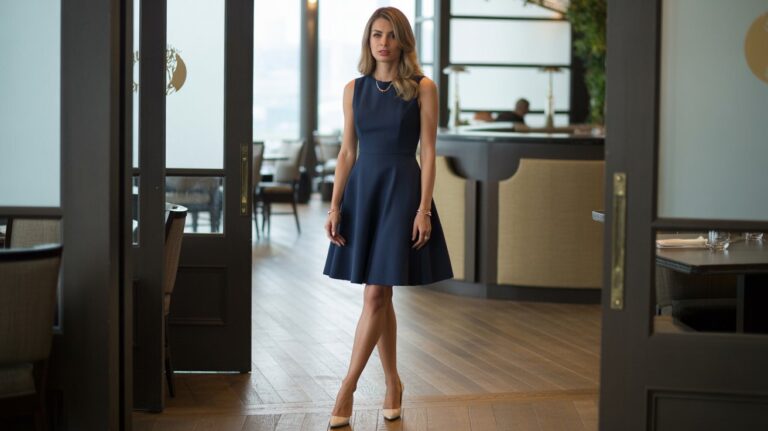Too Many Clothes, Nothing to Wear: How to Declutter and Rebuild Smarter
You know that feeling when you’re standing in front of a packed closet, clothes practically spilling out, yet you’re convinced you have absolutely nothing to wear? Yeah, I’ve been there too many times to count. It’s like having a fridge full of ingredients but still ordering takeout – technically, everything’s there, but somehow nothing works together.
Here’s the thing: most of us don’t have a clothing shortage problem; we have a clothing strategy problem. After years of buying “just one more cute top” and holding onto that dress from 2019 “just in case,” our closets have turned into chaotic storage units instead of functional spaces that actually serve us.
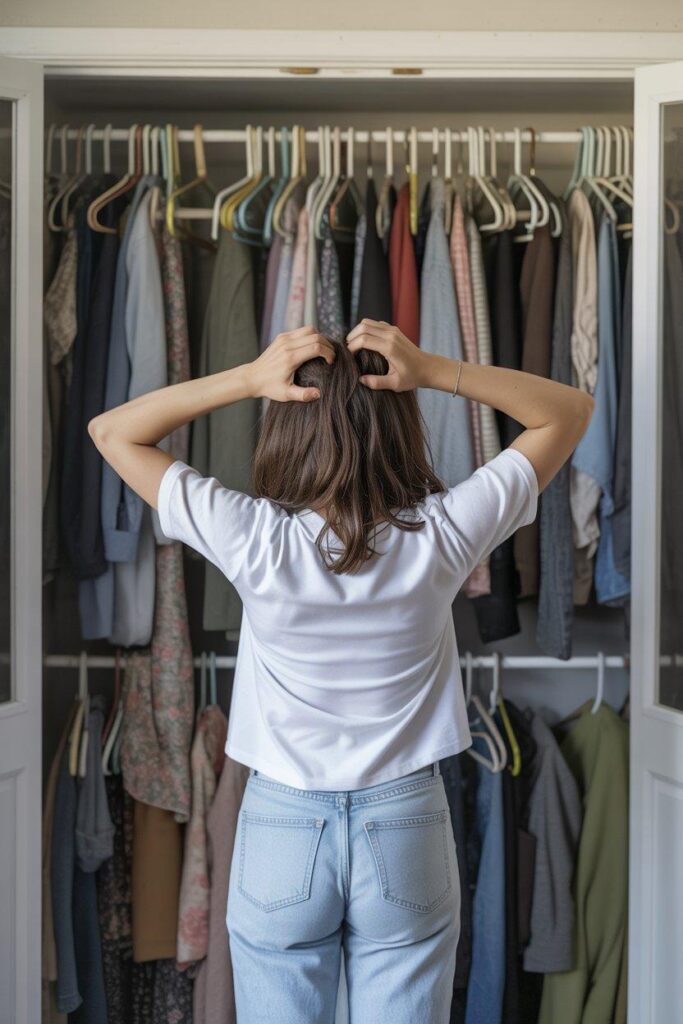
The Real Problem Isn’t What You Think
You’re Not Actually Indecisive
Let me guess – you’ve blamed your morning wardrobe meltdowns on being indecisive, right? Wrong. The issue isn’t your decision-making skills; it’s decision fatigue. When you’re faced with 47 different tops and none of them seem to go with anything else, your brain just gives up.
I learned this the hard way when I realized I was wearing the same three outfits on rotation while ignoring 80% of my closet. Sound familiar?
The “Just in Case” Trap
We’re all guilty of keeping clothes for imaginary scenarios. That sparkly top you bought for New Year’s Eve 2022? Still hanging there, waiting for another “perfect moment.” Meanwhile, you’re struggling to find something decent for your actual life – work meetings, coffee dates, grocery runs.
Here’s a reality check: If you haven’t worn something in the past year, you probably won’t wear it next year either. I know, I know – it was expensive, or it has sentimental value. But keeping clothes you don’t wear is like keeping expired food in your pantry. It just takes up space and makes finding what you need harder.
The Psychology Behind Closet Chaos
Ever wonder why some people can effortlessly put together amazing outfits while the rest of us struggle? It’s not magic – it’s strategic curation. They’ve figured out what works for their lifestyle, body, and personal style, then built their wardrobe around those core elements.
Think about it: when you go to your favorite restaurant, you don’t stare at the entire menu for 20 minutes. You probably have two or three go-to dishes that you know you love. Your closet should work the same way.
Step 1: The Great Closet Audit
Be Brutally Honest
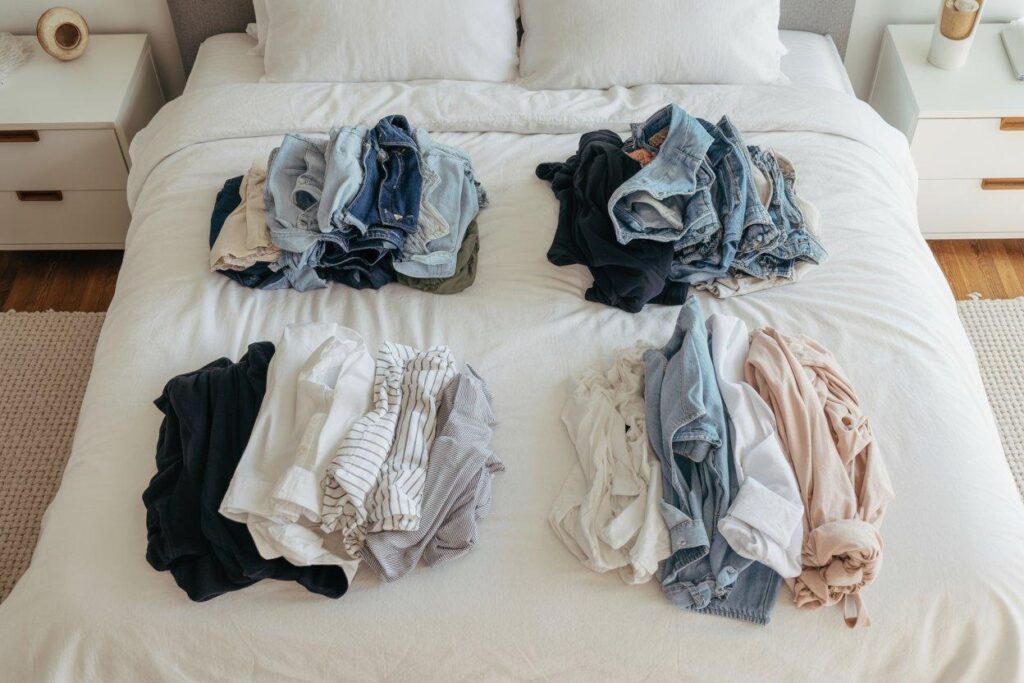
Time for some tough love. Take everything out of your closet – yes, everything. This might look like a tornado hit your bedroom, but trust me, it’s necessary.
Create three piles:
- Love and wear regularly (the keepers)
- Haven’t worn in 6+ months (the maybes)
- What was I thinking? (the definite nos)
The One-Year Rule
If you haven’t worn something in the past year, it needs to go. I don’t care if it still has the tags on it or cost a small fortune. Keeping clothes you don’t wear is expensive – they’re taking up valuable real estate and mental energy.
Exception: seasonal items or special occasion pieces (but be honest about how “special” that occasion really needs to be).
The Fit Test
Try everything on. I mean it. That dress that looked amazing on the hanger might not be as flattering as you remembered. If it doesn’t make you feel confident and comfortable, it’s not earning its place in your closet.
Your body changes, your lifestyle changes, and sometimes your taste evolves. What worked for you three years ago might not work for you now, and that’s totally normal.
Step 2: Smart Closet Organization Hacks
The Capsule Wardrobe Approach
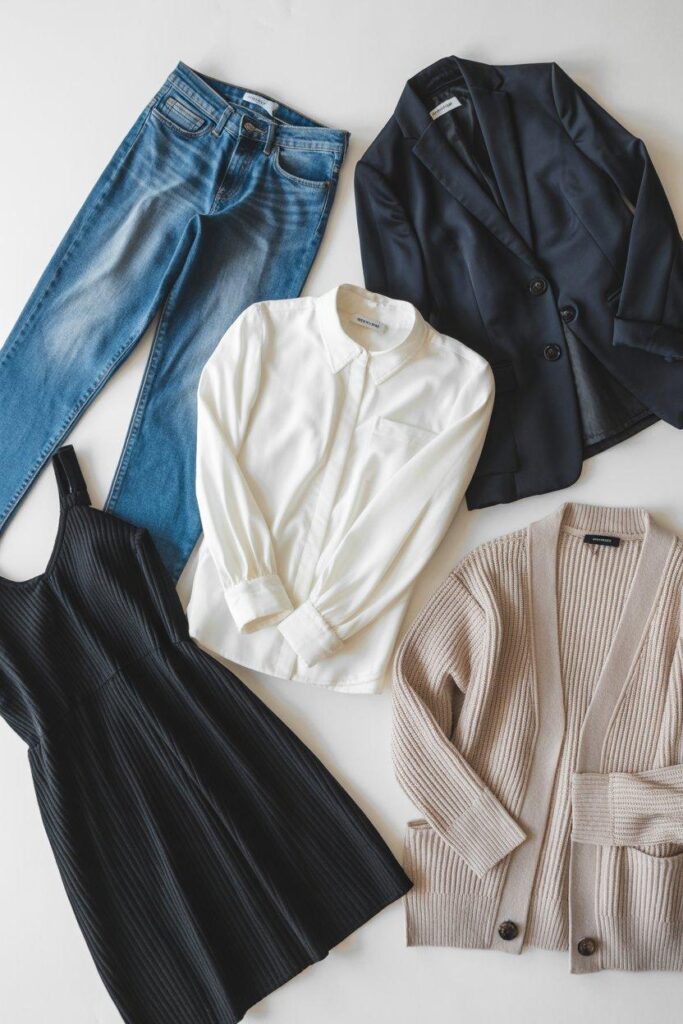
Before you roll your eyes and think “minimalist wardrobe ideas are too boring for me,” hear me out. A capsule wardrobe doesn’t mean wearing beige forever. It means choosing pieces that work together so you can create multiple outfits without the guesswork.
Start with these foundation pieces:
- 2-3 well-fitting jeans or pants in neutral colors
- 5-7 tops that mix and match easily
- 2-3 versatile dresses
- 1-2 blazers or cardigans for layering
- Comfortable shoes that go with multiple outfits
The Color Story Strategy
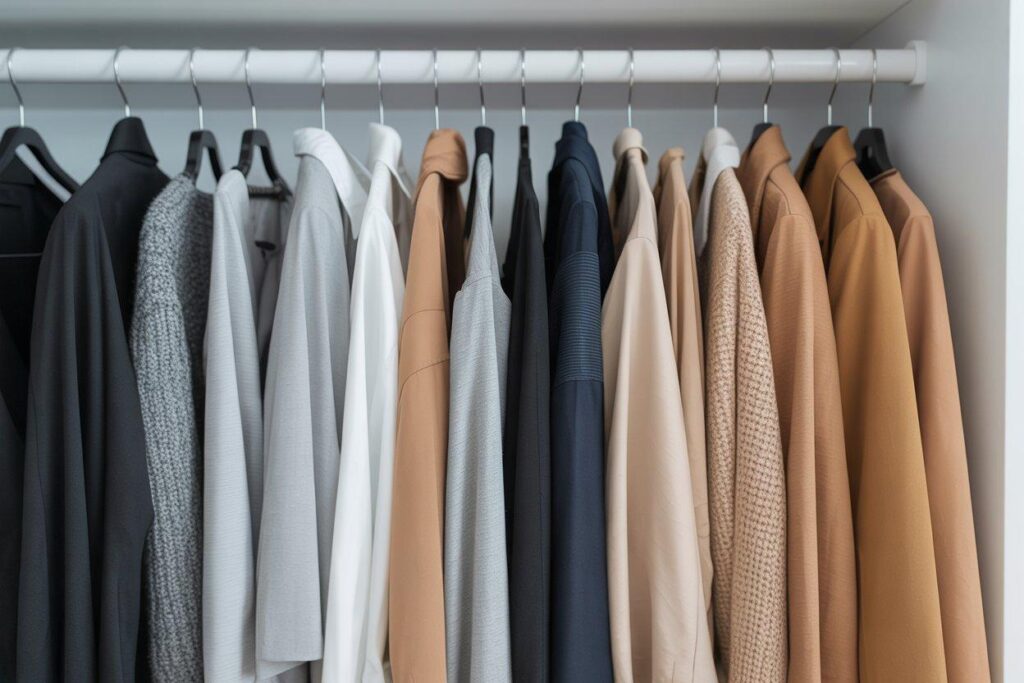
Pick 3-4 colors that look amazing on you and work well together. This is your color palette. Everything you buy should fit within this palette. Suddenly, getting dressed becomes like playing with a matching set instead of trying to solve a puzzle with pieces from five different boxes.
My personal palette is black, white, navy, and camel. Sounds boring? It’s actually liberating. I can grab almost anything from my closet and know it’ll work together.
The Visibility Factor
If you can’t see it, you won’t wear it. Invest in proper hangers – no more wire hangers from the dry cleaner, please. Everything should hang nicely and be visible at a glance.
For folded items, try the Marie Kondo method of folding things vertically so you can see everything in your drawer. Game changer, IMO.
Step 3: Rebuilding Your Wardrobe Strategically
Quality Over Quantity
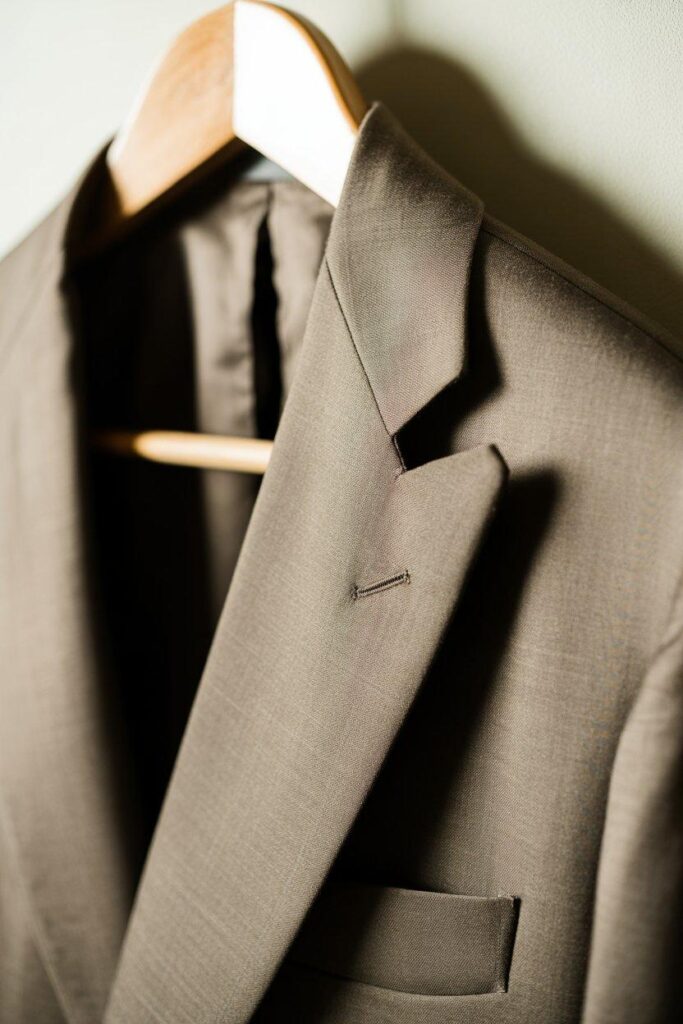
I used to be the queen of fast fashion hauls. Cheap tops, trendy accessories, shoes that fell apart after three wears. My closet was full, but I still felt like I had nothing good to wear. Sound familiar?
Now I buy fewer pieces, but I invest in quality basics that last. That well-made blazer might cost three times more than a cheap one, but if it lasts five years instead of five months, it’s actually the better deal.
The One-In-One-Out Rule
For every new item you bring into your closet, one item should leave. This prevents the slow creep back to chaos and forces you to really consider whether a new purchase is worth it.
Building Around Your Lifestyle
Be honest about your actual life. If you work from home 90% of the time, you probably don’t need seven blazers. If you’re constantly chasing after kids at the playground, those white jeans might not be practical.
Build your wardrobe around your real life, not your Pinterest dreams.
Wardrobe Decluttering Tips for Long-Term Success
The Seasonal Rotation
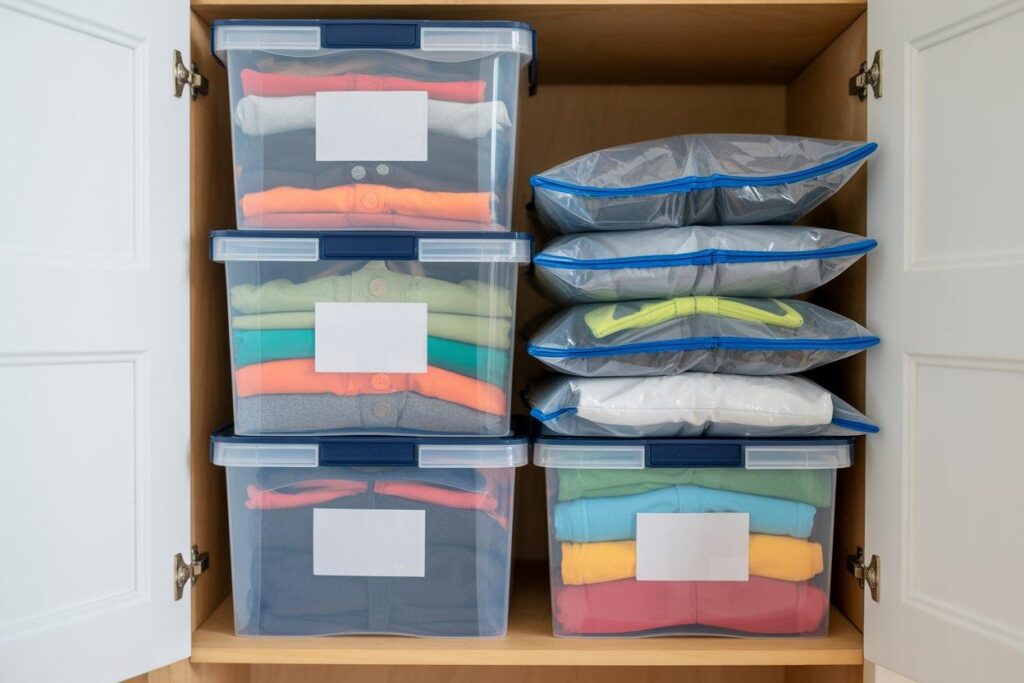
Store out-of-season clothes elsewhere. You don’t need your wool coats taking up space in July. This keeps your daily options focused and makes your closet feel less overwhelming.
The 30-Day Test
When you’re unsure about keeping something, put it in a separate area for 30 days. If you don’t think about it or reach for it during that time, donate it. Your subconscious is usually right about these things.
Regular Check-Ins
Schedule a closet review every season. What worked? What didn’t? Are there gaps you need to fill? This prevents another major overhaul situation down the line.
The Emotional Side of Letting Go
It’s Okay to Feel Attached
Getting rid of clothes can be surprisingly emotional. That dress from your first job interview, the sweater your grandmother gave you – these items represent memories, not just fabric. It’s normal to feel hesitant about letting them go.
But here’s the thing: keeping clothes you don’t wear doesn’t preserve the memories. If something is truly sentimental, consider taking a photo of it before donating. The memory lives in your heart, not your closet.
Guilt About Money Spent
We’ve all made purchasing mistakes. That expensive dress that seemed perfect in the store but never felt right at home. Instead of keeping it as an expensive reminder of your regret, donate it and let someone else enjoy it.
Think of it as tuition for learning what works for you. Every fashion mistake teaches you something about your style preferences.
Making Your New System Stick
Start Small
Don’t try to overhaul your entire wardrobe in one weekend. Start with one category – maybe tops or pants – and perfect that system before moving on. Sustainable change happens gradually.
Create Getting-Dressed Rituals
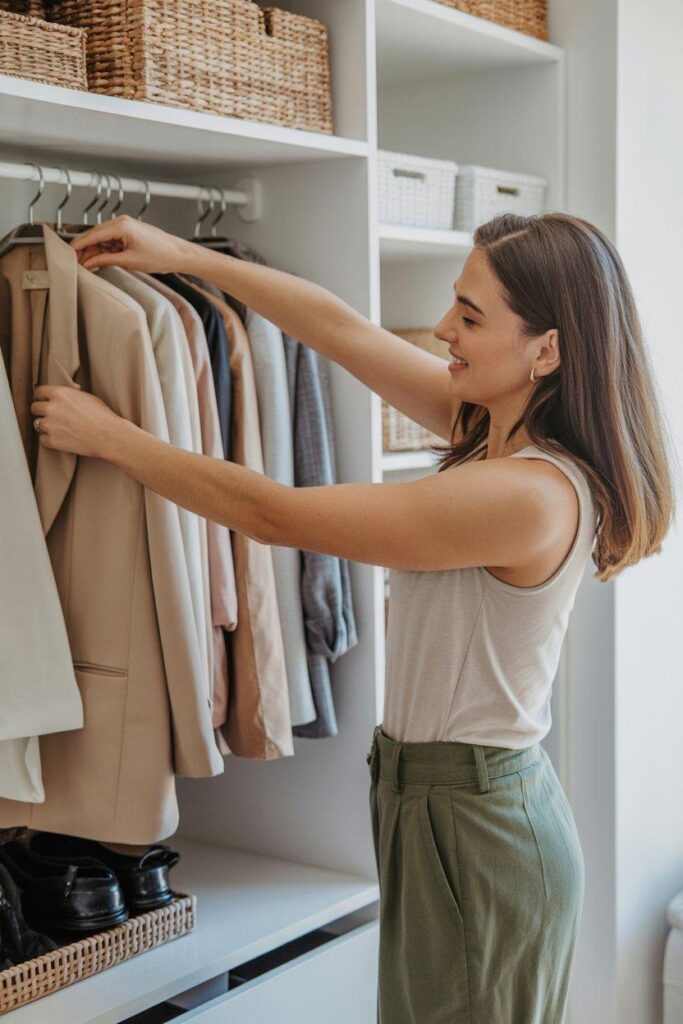
Lay out your clothes the night before. It sounds simple, but it eliminates morning decision fatigue and helps you start the day feeling put-together. Plus, you’ll quickly identify when pieces don’t work together while you still have time to adjust.
Track What Works
Keep a note in your phone of outfits you felt great in. When you’re having a “nothing to wear” moment, you can reference your greatest hits. It’s like having a personal style cheat sheet.
The Final Word: Less Really Is More
FYI, this isn’t about depriving yourself or adhering to some arbitrary minimalist standard. It’s about creating a wardrobe that actually serves your life instead of stressing you out every morning.
The goal isn’t to have the fewest clothes possible; it’s to have the right clothes for you. Some people thrive with 30 pieces, others need 60. The magic number is whatever makes you feel confident, comfortable, and authentically you.
After implementing these changes, I went from an overstuffed closet that gave me anxiety to a curated collection that makes getting dressed feel effortless. And the best part? I spend way less money on clothes now because I’m not constantly buying things to fill gaps or chase trends.
Your closet should be a place of possibility, not frustration. With a little strategy and some honest self-reflection, you can transform that overwhelming collection of “maybes” into a streamlined selection of “hell yes” pieces that make you feel amazing every single day.
Ready to finally solve the “nothing to wear” paradox? Your future self – the one who gets dressed in five minutes and still looks put-together – is going to thank you.

